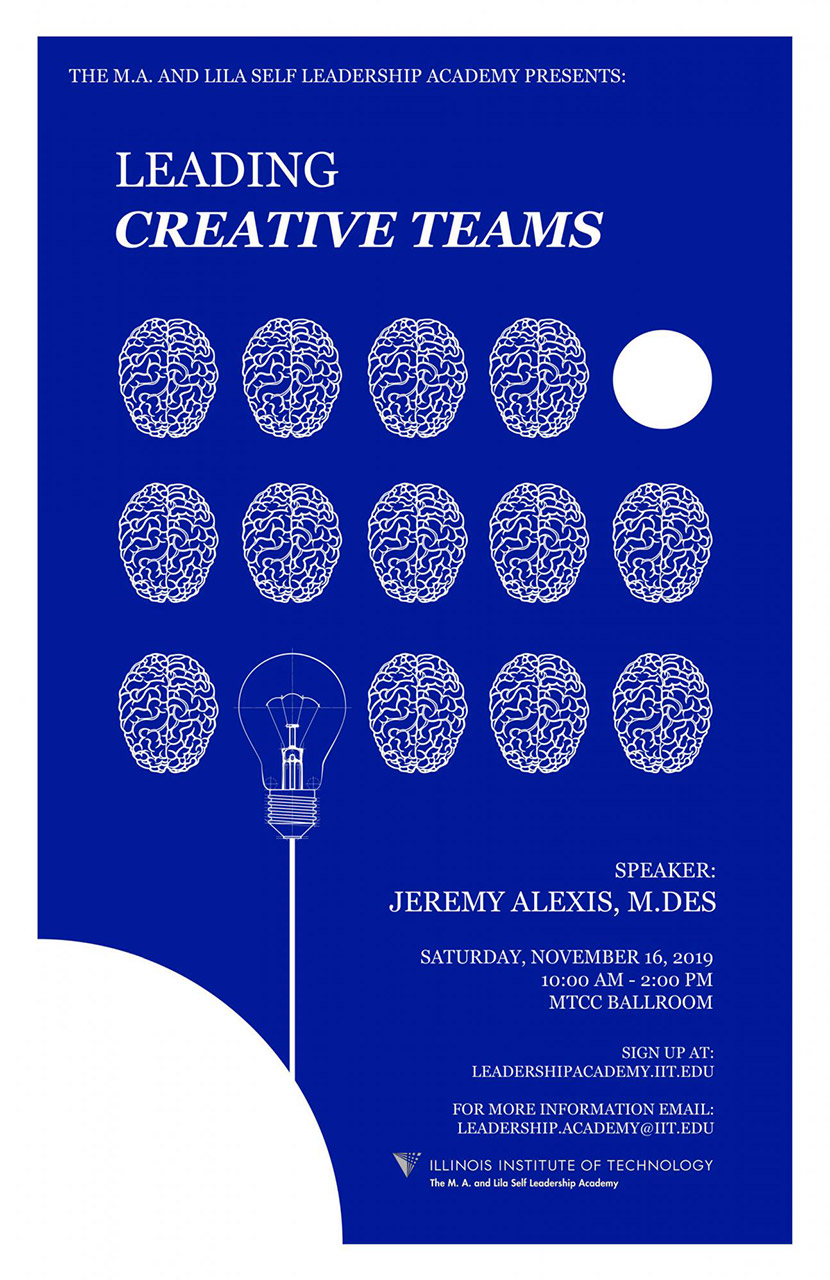Leadership Academy Seminar #2 - Leading Creative Teams
Speaker
Jeremy Alexis, MDes (Bio)
Overview
In the series Mad Men, Don Draper famously said to a client: “You came here because we do this better than you and part of that is letting our creatives be unproductive until they are”. This quote is indicative of an out-dated but still practiced approach to managing creative teams… leave them alone and they will come back and wow you with something. Unsurprisingly the strategy “leave them alone and hope for the best” rarely has a good outcome. But traditional approaches to leadership are also ineffective at maximizing the potential of design teams. How can a leader balance the need for exploration and critical thought with business realities and resource constraints?
This session will focus on identifying, understanding, unlocking, and managing the six traits that make great designers and innovators. We will focus on what these traits are, why they are important, how to maximize them, how to reduce them (which is sometimes needed), and how to compose projects to maximize value.
Objectives
After this workshop, participants will know how to:
- Curiosity: Creative teams are eager to understand, investigate, and have diverse experiences. Our focus will be how to ensure your teams are appropriately curious, exploring when it benefits the project and program.
- Criticality: When creative teams ask “why“, they are usually asking “why does this work this way, can it work a better way?” Criticality ensures that creative teams are always seeking out the most optimal, valid solution.
- Critique: Good creative teams share their work, get feedback, and iterate. In a culture of critique ideas are continually evaluated by a range of stakeholders (including customers and users). We will focus on building a culture of critique, setting the conditions for meaningful, constructive discussions.
- Courage: Good creative teams are not afraid to challenge conventions and suggest unexpected and challenging ideas. Here we will focus on how to heat up projects (increase the degree of challenge by the designers) as well as cool off projects (reduce the level of challenge).
- Constraint: Good creative teams recognize constraints and see them as features and springboards, not barriers. This trait ensures that innovation and design proposals are feasible and can be implemented. We will teach how to identify the right constraints and ensure the team views and uses them as key inputs that expand their creativity, not limiting it.
- Clarity: This is more a trait of successful creative leadership, not just creative teams. Of course teams benefit from a clear vision for a project, but clarity also extends to their role and impact (on the project, team, and the world). We will focus on how to bring clarity of mission, purpose, and process for a successful creative team.


